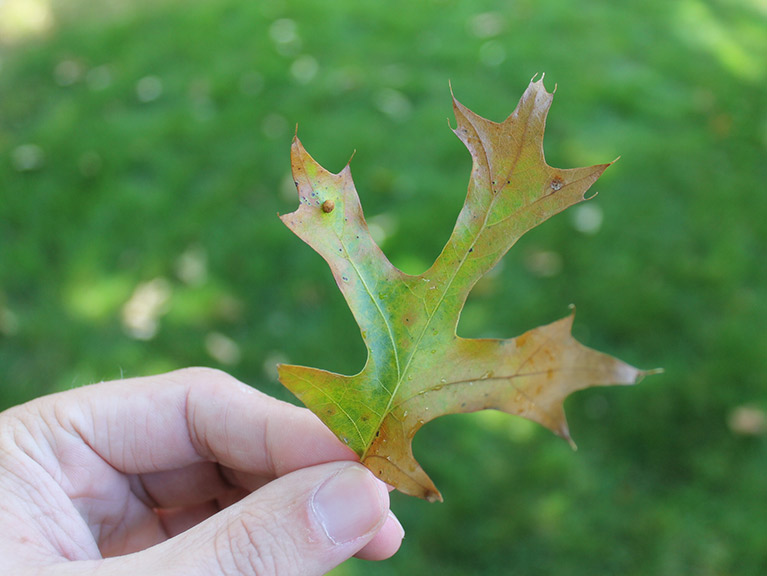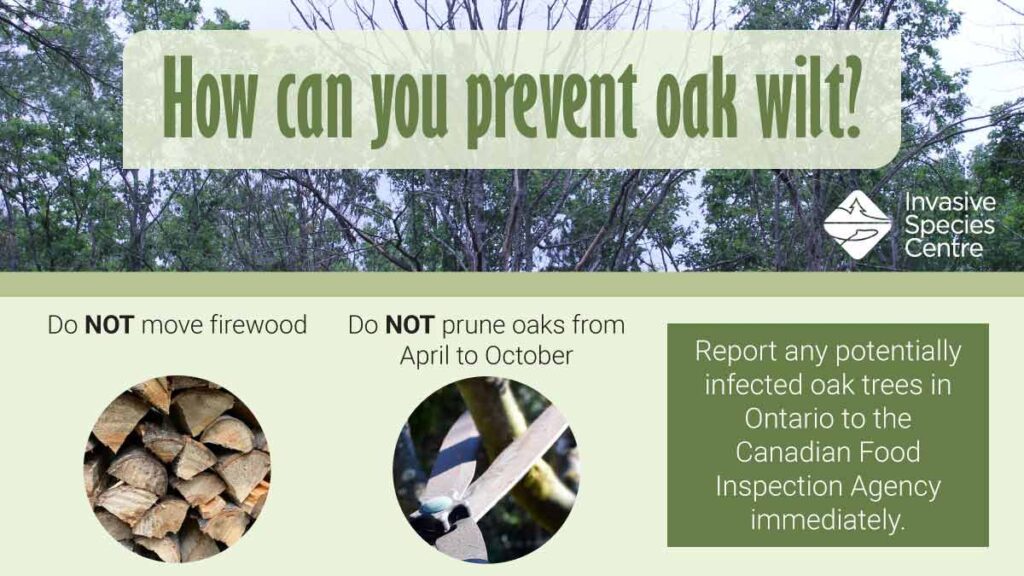
cause discoloured oak leaves, including drought. Invasive Species Centre. Download the high-res image here.
The Canadian Food Inspection Agency has confirmed the presence of a forest invasive that targets oak trees, called oak wilt (Bretziella fagacearum), in Niagara Falls, Ontario. This is the first known case of oak wilt in Canada. The loss of oak trees would be felt in both urban and natural spaces as oaks are in many backyards, parks, woodlots, and forests.
Oak wilt is an invasive vascular disease of oak trees caused by a fungus that disrupts the movement of water and nutrients. All oaks are susceptible to oak wilt, but red oaks are particularly vulnerable and can die in 2-6 weeks following infection. The disease can cause widespread economic, ecological, and social impacts if left undetected or untreated.
To help prevent the spread of this detection, movement restrictions are in place on affected properties. The Canadian Food Inspection Agency is working with other federal, provincial and municipal governments to survey the area and determine next steps.
“Invasive species education and awareness is important to make these types of detections,” says Sarah Rang, Executive Director of the Invasive Species Centre. “The earlier an invasive species is detected, the better the chances of eradication. I encourage people to learn more about the signs of oak wilt, keep an eye on trees in their area, and report any sick-looking oak trees to the Canadian Food Inspection Agency.”
What Community Members Can Do
People can protect oak trees by not transporting firewood long distances and not pruning oak trees between April and October. Canadians are encouraged to monitor the health of oak trees and report signs of oak wilt.
What to look for:
- Wilting and bronzing of oak leaves, starting from the top of the tree and moving down
- Discolouration of the leaves, beginning at the leaf edges and progressing to the midrib
- Premature leaf fall
- White, grey, or black fungal mats, also referred to as “pressure pads”, just under the bark that sometimes emit a fruity smell
- Vertical bark cracks in the trunk and large branches from the fungal spore mat exerting outward pressure on the bark
Please report any suspect signs in Ontario to the Canadian Food Inspection Agency (CFIA). A good report includes an accurate location of the suspect tree and photos of the symptoms. The CFIA will respond to reports of oak wilt and take appropriate action, which may include site surveying and sample collection.

Additional Resources
The Invasive Species Centre has resources available to learn more about oak wilt, including a free factsheet, municipal checklist, and webinar about the potential economic impacts. An Oak Wilt Training Course in the Invasive Species Centre’s Invasive Species Training Program highlights topics such as the biology, spread, impacts, and management of oak wilt.
The Invasive Species Centre is holding virtual and in-person events this summer, including a virtual Oak Wilt Question and Answer Expert Panel Webinar to answer frequently asked questions about the new invader.
All of these resources are available on the Oak Wilt Species Profile.
